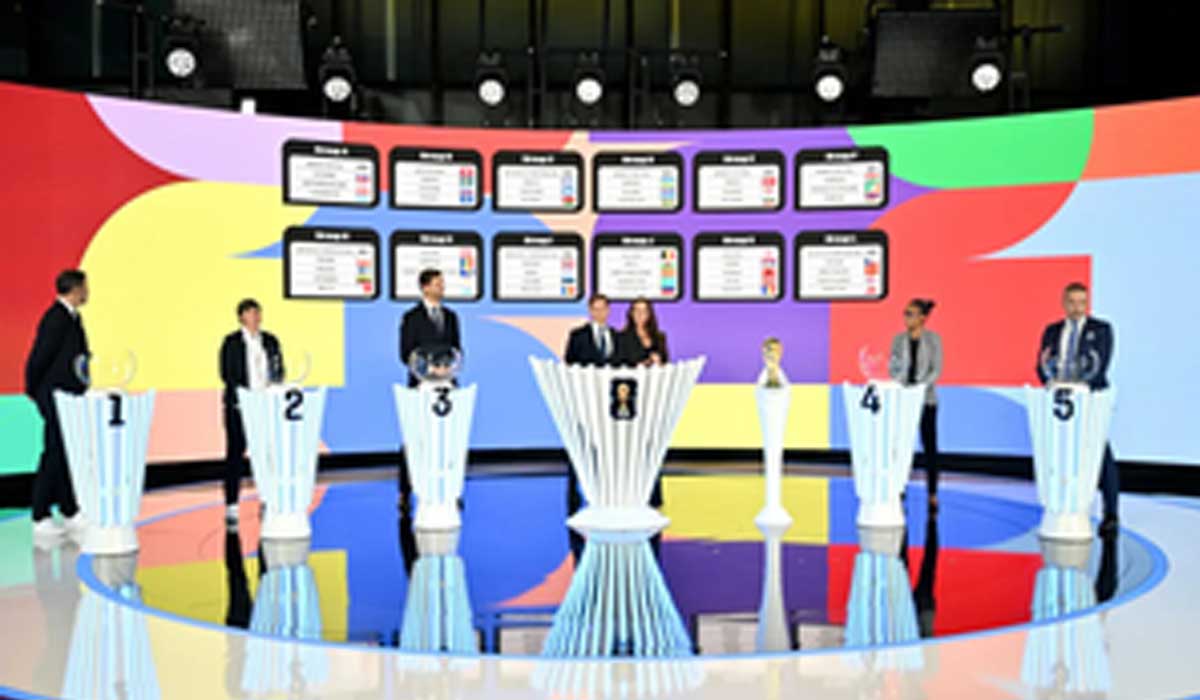FIFA World Cup 2026 qualifying: UEFA preliminary draw unveils path for Europe’s 54 hopefuls
The FIFA World Cup 2026 qualifying journey for Europe’s 54 teams begins with the UEFA preliminary draw in Zurich. Learn about the group stage, thrilling matchups, and key dates leading to this historic tournament.

UEFA Preliminary Draw Sets Stage for Europe’s 54 Hopefuls
The journey to the FIFA World Cup 2026 qualifying has officially begun for Europe’s 54 hopeful nations. Held in Zurich, the UEFA preliminary draw has mapped out the challenging road ahead. A record-breaking 16 spots are available for UEFA representatives at this historic 48-team tournament, set to take place in Canada, Mexico, and the USA. With anticipation building, let’s dive into the details of this exciting qualification process.
Overview of the UEFA Qualifying Path
The UEFA qualification process for the FIFA World Cup 2026 will unfold in two phases:
- Group Stage (March 2025 – November 2025):
- 12 groups of 4-5 teams.
- Group winners directly qualify for the World Cup.
- Play-Offs (March 2026):
- 16 teams (12 group-stage runners-up + 4 best-ranked UEFA Nations League group winners not already qualified).
- Four remaining World Cup spots decided.
Exciting Matchups in Group Stage
Eight of the 12 groups will finalize their Pot 1 teams after the UEFA Nations League quarter-finals in March 2025. Enthralling matches are already on the horizon:
- England vs Serbia
- Switzerland vs Sweden
- Belgium vs Wales
UEFA Preliminary Draw Results
Here is the breakdown of the groups, highlighting the potential for thrilling competition:
Group A
- Winner of Italy vs Germany (QF4)
- Slovakia
- Northern Ireland
- Luxembourg
Group B
- Switzerland
- Sweden
- Slovenia
- Kosovo
Group C
- Loser of Denmark vs Portugal (QF3)
- Greece
- Scotland
- Belarus
Group D
- Winner of Croatia vs France (QF2)
- Ukraine
- Iceland
- Azerbaijan
Group E
- Winner of Netherlands vs Spain (QF1)
- Türkiye
- Georgia
- Bulgaria
Group F
- Winner of Denmark vs Portugal (QF3)
- Hungary
- Republic of Ireland
- Armenia
Group G
- Loser of Netherlands vs Spain (QF1)
- Poland
- Finland
- Lithuania
- Malta
Group H
- Austria
- Romania
- Bosnia and Herzegovina
- Cyprus
- San Marino
Group I
- Loser of Italy vs Germany (QF4)
- Norway
- Israel
- Estonia
- Moldova
Group J
- Belgium
- Wales
- North Macedonia
- Kazakhstan
- Liechtenstein
Group K
- England
- Serbia
- Albania
- Latvia
- Andorra
Group L
- Loser of Croatia vs France (QF2)
- Czechia
- Montenegro
- Faroe Islands
- Gibraltar
Key Highlights of the Draw
- The draw has set the stage for highly competitive matches.
- Italy, Germany, Croatia, France, Netherlands, and Spain have been split into different groups based on their Nations League performances.
- The qualification process ensures that top teams and emerging talents have a fair shot at securing their place on the world stage.
What’s Next?
The road ahead is demanding but offers ample opportunities for teams to shine.
Timeline
- March 2025: Group Stage begins.
- November 2025: Group Stage concludes.
- March 2026: Play-offs to finalize the remaining four UEFA spots.
Why This Draw Is Historic
- First-Ever 48-Team FIFA World Cup: More nations, more diversity, and more excitement.
- 16 UEFA Spots: The highest number of spots ever allocated to Europe.
- Tri-Nation Host: The event’s unique format in Canada, Mexico, and the USA promises a global spectacle.
SEO Benefits for News Enthusiasts
Bullet Points for Quick Takeaways
- 16 UEFA spots available for the first 48-team FIFA World Cup.
- Exciting group-stage matches like England vs Serbia and Belgium vs Wales.
- March 2026: Play-offs to finalize the remaining four UEFA qualifiers.
Why It Matters
This competition not only determines Europe’s representation but also sets the stage for incredible stories of resilience, talent, and teamwork on the world’s grandest football platform.
